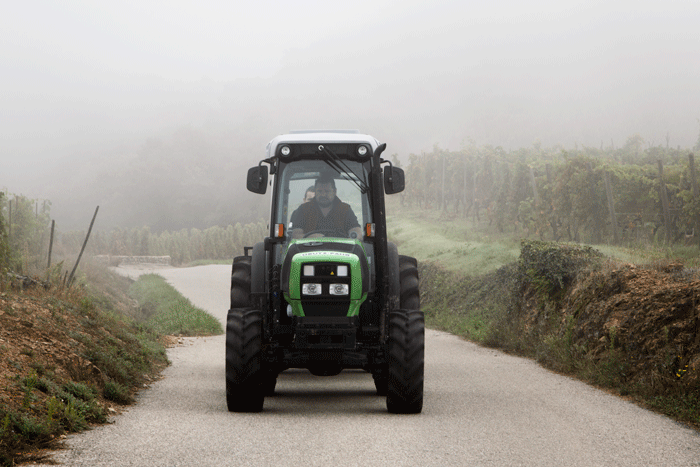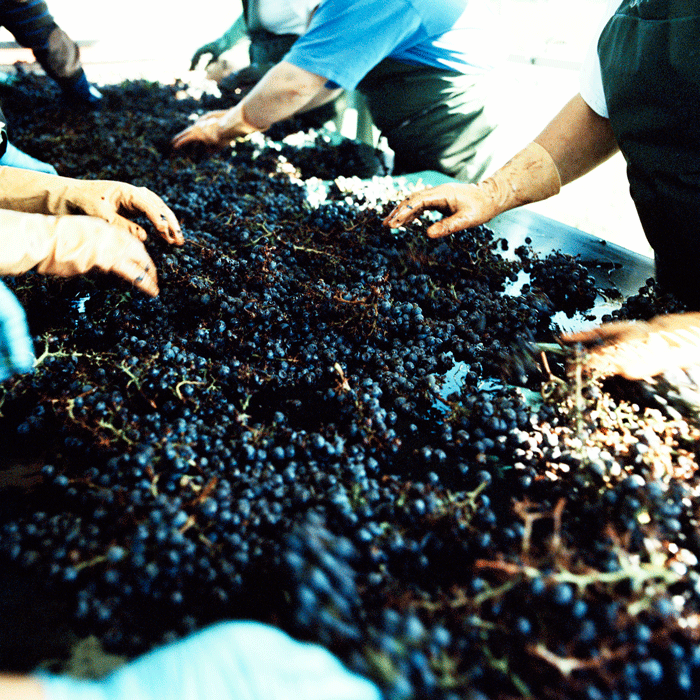The buyers’ review: 2014
Author: Sophie Thorpe
Mark Pardoe MW
2013 Domaine Lyrarakis, Thrapsathiri, Armi, Crete, Greece
My interest is always piqued by grape varieties which are (to me) as yet unknown, and especially when they can produce really interesting wines. Bart Lyrarakis hit the bulls-eye when he offered us this wine. We already knew that Bart was dedicated to preserving the ancient wine culture of the island of Crete, especially its autochthonous vines; but this wine, only made for the first time in tiny quantities by his family winery in 2012, was further evidence of his devotion. Grown at 500 metres above sea-level to mitigate the heat, and given a little time in barrel, this wine is at once both exotic and reassuring. Interesting notes of clove and cinnamon lead to a full, rich palate, antithetically honeyed, almost like mead, but not at all sweet – in fact a wine assertively for food. It seems made for rich pork, veal and oleaginous Mediterranean dishes, especially if aubergine features. This wine offers a most alluring array of remarkable and individual flavours.
Martin Hudson MW
Berry Bros. & Rudd Dry Oloroso, Sanlúcar de Barrameda
I have to confess to having something of a Sherry habit, and was mortified when my chosen Berry Bros. & Rudd example was briefly unavailable earlier this year. Salvation is at hand, with the recently-arrived new incarnation of this favourite, arguably more classically formed and profound than ever. Sherry is probably the most under-valued fine wine in the world (very fortunate, as I average a bottle a week – or thereabouts), with levels of complexity and persistence that would command a ten-fold increase in price were they sourced from Bordeaux or Burgundy. Berry Bros. & Rudd Dry Oloroso has a nose suggestive of something sweet, with its notes of walnuts and dried fruit, so the lack of sweetness on the palate is initially something of a shock. As the layers of flavour unfold in your mouth, this is clearly a very different wine from a more commercial sweetened cream Sherry. In addition to the nuts and raisined-depth, there is a haunting toffee-sweetness on the palate of this dry wine. The finish persists for an age.
When to drink this gem: before dinner with some salted almonds or olives works, as does afterwards, with some walnuts. Oloroso is also surprisingly good with robust meat dishes. The oxidative aging on this wine means that, unlike Fino or Manzanilla – which should be consumed within a day or so of opening – this wine will continue to give pleasure for up to a week after first being broached.
(NB: This is also featuring in our January Sale, so can currently be snapped up for just £7.95 a bottle.)
Simon Field MW
2012 Côtes du Rhône Villages, La Cadène Blanc, Domaine Chaume Arnaud, Rhône
Domaine Chaume Arnaud is one of the leading properties in the modish Southern Rhône village of Vinsobres, the very name of which, beyond its gentle oxymoronic components, betrays the region’s long-standing oenophilia. Philippe and Valérie achieved full biodynamic accreditation in 2009 and their wines sing a distinctly Mediterranean song, but with a descant of real purity.
Five percent of Roussanne is added to the traditional blend of Marsanne and Viognier, lending even more aromatic complexity to an already impressively perfumed wine. Honeydew melon, fig and quince are all evidenced, with notes of verbena and gingerbread and a hint of spice for good measure. This wine is a fantastic ambassador for all that is good in a hitherto undervalued white wine category.
Catriona Felstead MW
2011 Ambrosía Viña Unica Cabernet Sauvignon, Gualtallary, Uco Valley, Argentina
We were fortunate enough to be visited by Daniel Pi (winemaker), Dr Pedro Parra (viticulturalist) and Antonio Castro (part owner) of Ambrosía at our London Shop in early December. Tasting the wines again that day reminded me just why Ambrosía are so good at what they do. The vines grow at 1300 metres altitude in the premium growing region of Gualtallery (referred to as ‘the Grand Cru of Argentina’) in the Uco Valley, Mendoza. The soil here has a high limestone content which is a key factor for these wines having an elegance and mineral note to them alongside the overt fruit that you would expect from Argentina. This Cabernet Sauvignon tastes absolutely superb at the moment with dense, pure blackcurrant fruit and a beautiful seam of stony minerality running through its core. It is exceptionally well balanced, with the Argentine warmth held in check, and is a very rewarding wine.
David Berry Green
2012 Cirò Classico Superiore, Aris, Sergio Arcuri, Calabria, Italy
During the late 19th and early to mid-20th centuries, as the phylloxera louse devastated French and northern Italian vineyards, it was wine like this Cirò – made from the local Gaglioppo grape – that came to the rescue, transported in bulk from Italy’s toe to be blended with whatever the local winegrowers could scrape together from their fruitless vineyards. As with other such southern Italian grapes and wines, such as Basilicata’s Aglianico del Vulture, a little dose of this sunny, super-intense fruit brought a warm heart to otherwise meagre offerings. Indeed the Arcuri family made their living supplying northern markets in just such a way; the train departing from close to their base at Cirò Marina on the Calabrian coast. Now, reflecting the seismic change reverberating through the Italian fine wine scene as the next generation step up, so Sergio Arcuri has since 2009 been vinifying and bottling his family’s fruit himself. This is no sun-dried passito wine, but an elegantly structured, fresh, red-berried thing with all the trappings of grander wines from further north… at a third of the price. Best decanted for the full effect.
Browse the full list of 2014’s finest bottles, as viewed by the Berry Bros. & Rudd buying team, on bbr.com.




